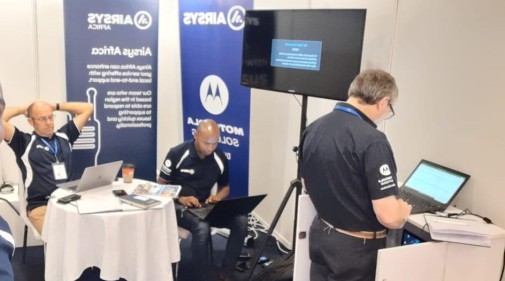For many years hams have been using Motorola commercial radios modified for amateur radio use. Since the commercial changeover to narrow-b

and some years ago a great deal of the now unusable commercial equipment is now available to the amateur community with Africa(specifically east and central Africa ). One of the sticking points of using these radios has been the programming which required access to the software and more importantly a computer and hardware that was able to do it. It was widely accepted that you would need an old slow computer with a dedicated ser
ial port to do this and trying anything else either did not work or was very finicky. Most would either not have the software or proper hardware. Because of this,i have tried to implemented a novel approach that should work consistently using a Raspberry Pi for all my east and central africa people, the hamvoip software, and a couple of inexpensive cables. This works on the hamvoip Archlinux installation and can be used in conjunction with a running Allstar system in fact I have used a node on the same server while I was programming without any problems. This also could add the ability to program a radio at a remote site without being there.
The ham voip programming package uses dosbox a program t
o simulate MSDOS. The Raspberry Pi is an excellent platform to do this as it is readily available and provides a consistent environment to run the code. Because it was not desirable to install the entire graphics package in the hamvoip installation, which would be necessary to run DOSBOX directly on the Pi, we instead do X11 forwarding to an X11 server where the program is displayed. The Motorola programming packages run under this MSDOS environment. All timings and configurations have been preset and so far have worked with all tested radios. Be aware that this uses a supplied custom compiled dosbox which works with the FTDI controller to supply the required custom baudrates that the Motorola radios require.
You could remotely program a radio at a distant site using these methods.Some users may want to use a dedicated non-Allstar Pi to do the programming. It is cheap enough to dedicate another Pi. You can disable the loading of Allstar by commenting the “/usr/local/etc/rc.allstar” line in /etc/rc.local. Putting a # at the beginning of this line comments it. In addition you can disable the Admin menu by commenting the “exec /usr/local/sbin/admin.sh” line in /root/.bash_profile. It is the last line in the file. Reboot after making these changes. When you login to your programming Pi you will now go directly to the Linux prompt where you can type “dosbox”
The application works equally well on a Pi2 although noticeably slower. A good use for your old Pi2’s.
Felt like sharing to uplift the lives of my people as we strive day in day out to make our EMEA region better……The next tech revolution is coming from my mother continent.
Author:Samwel Kariuki
14th Nov 2019
